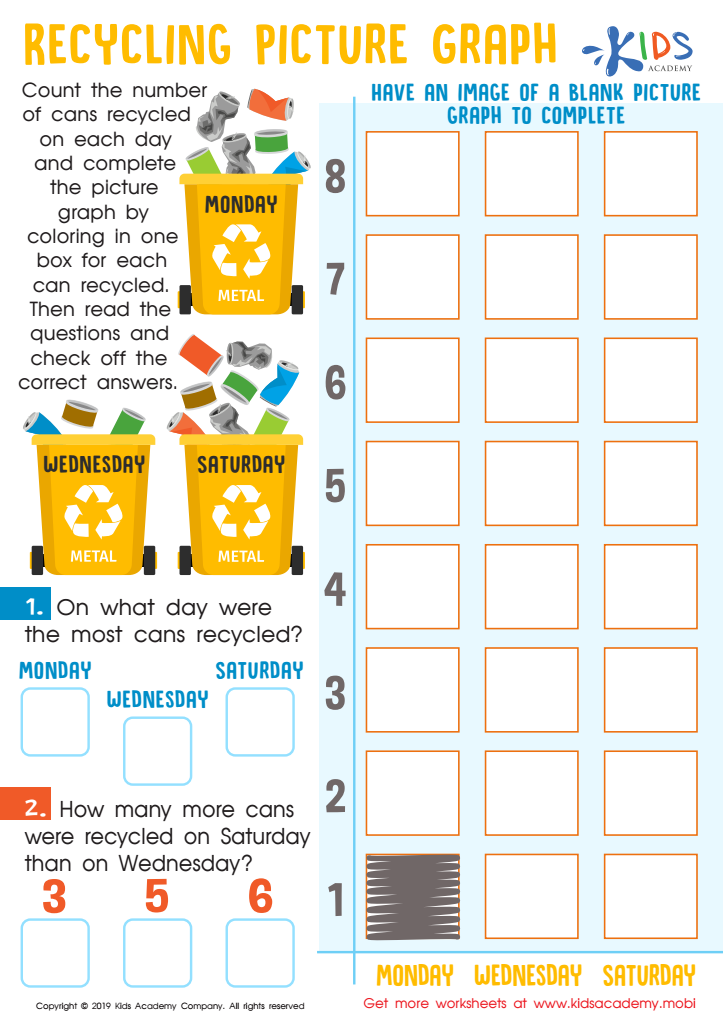Understanding graphs Math Worksheets for Ages 7-8
6 filtered results
-
From - To
Unlock the world of data interpretation with our "Understanding Graphs Math Worksheets" designed specifically for children aged 7-8. These engaging worksheets introduce young learners to essential graph concepts, including bar graphs, line graphs, and pictographs, enhancing their ability to read and interpret visual information. Each worksheet features vibrant illustrations and real-life examples, making math fun and relatable. As your child practices creating and analyzing graphs, they'll develop critical thinking and analytical skills that are vital for their academic journey. Perfect for home or classroom use, these worksheets provide an interactive and educational experience that supports early math development. Get started today!


Recycling Picture Graph Worksheet


Making a Graph: Creepy Crawlies Worksheet


Fruit Math: Picture Graphs Worksheet


Tricky Graphs Worksheet


Match Tally Marks to Bar Graphs Worksheet


Aircraft Carrier Picture Graphs Worksheet
Understanding graphs is a crucial skill for children aged 7-8, and it’s imperative for parents and teachers to prioritize this learning. Graphs serve as visual representations of data, enabling children to comprehend information more effectively. This foundational skill supports critical thinking and analytical abilities, which are essential throughout their educational journey and in everyday life.
At this age, children begin to encounter various forms of data, from simple pictographs to bar graphs, and learning to interpret these can help them grasp concepts of comparison, quantity, and trends. By understanding graphs, children develop the ability to analyze information, recognize patterns, and make informed decisions based on visual data.
Moreover, graph literacy fosters communication skills as kids learn to articulate findings or insights derived from these visual tools. This understanding can enrich their experience in science, social studies, and even art, where data representation is often necessary. Additionally, the skills learned through graph comprehension pave the way for more complex mathematical concepts in the future, ensuring students are well-prepared for advanced studies. Thus, encouraging this skill set benefits not only academic performance but also supports lifelong learning and informed citizenship.

 Assign to My Students
Assign to My Students















